Celebrating the power of public lands
By CASEY WARNER
Michigan Department of Natural Resources
If your plans for the upcoming weekend include hiking or biking on a scenic forest trail, a family picnic at the beach, small game hunting, camping at a state park – or one of the countless other outdoor experiences Michiganders enjoy – chances are, you value our state’s public lands.
This Saturday, Sept. 25, is National Public Lands Day, a day dedicated to appreciating public lands.
 The nation’s largest single-day volunteer event for public lands, established in 1994 and held annually on the fourth Saturday in September, this celebration brings out thousands of volunteers to help restore and improve public lands around the country. It offers those who love the outdoors an opportunity to show their gratitude for these valuable natural resources through trail restoration, park cleanups and other events. The nation’s largest single-day volunteer event for public lands, established in 1994 and held annually on the fourth Saturday in September, this celebration brings out thousands of volunteers to help restore and improve public lands around the country. It offers those who love the outdoors an opportunity to show their gratitude for these valuable natural resources through trail restoration, park cleanups and other events.
This year’s event maintains and builds on the theme of “More Ways to Connect to Nature.”
According to the National Public Lands Day website, “While virtual events were a necessity for many NPLD site managers last year, they have also proven to be an invaluable tool for connecting a wider, more diverse range of people to iconic parks, national forests, marine estuaries and other public lands sites. This year, our goal is to highlight that diversity – in public lands, people, and the ways in which we value and care for these spaces – by supporting in-person, virtual and hybrid NPLD events.”
Find a National Public Lands Day event near you or a virtual event.
Land strategy |
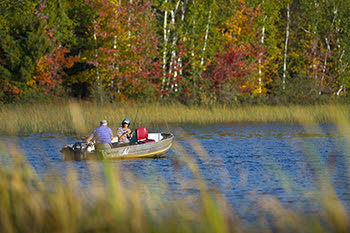 The Michigan Department of Natural Resources has spent much of the past two years developing an updated strategy for the approximately 4.6 million acres of public lands the department is responsible for taking care of, which are owned by Michigan residents. Those lands include state forests, game and wildlife areas, state parks, trails, boating access sites, and more. The Michigan Department of Natural Resources has spent much of the past two years developing an updated strategy for the approximately 4.6 million acres of public lands the department is responsible for taking care of, which are owned by Michigan residents. Those lands include state forests, game and wildlife areas, state parks, trails, boating access sites, and more.
The public land strategy, submitted to the Michigan Legislature in July and available at Michigan.gov/PublicLands, was developed through a collaborative process that included multiple opportunities for the public and stakeholders statewide to get involved and help shape the final document.
The new land strategy will be implemented between 2021 and 2027, following consideration and approval by the Legislature. It sets goals, strategies and measurable objectives to guide the DNR in:
- Protecting and preserving Michigan’s natural and cultural resources.
- Providing spaces for quality outdoor recreation opportunities.
- Performing responsible natural resource management.
An excerpt from the strategy sums up why public lands are so important:
“When lands are well taken care of, they strengthen the state in several ways. For example, public lands support Michigan’s environmental well-being with healthy forests protecting and promoting water quality. Additionally, caring for vegetation protects against erosion. They provide residents with ample outdoor recreation opportunities – often very close to home – to be physically active, clear away mental stress and discover new pursuits. These public lands also play a key role in Michigan’s economic health by enhancing local and regional economies.” |
 Getting outdoors, close to home Getting outdoors, close to home
Ensuring plentiful outdoor recreation opportunities across the state, in both urban and rural areas – places to go off-road, put a boat in the water, hunt, camp, hike, bike, watch wildlife and learn about history, among other pursuits – is one goal of the DNR’s public land strategy.
This goal, and the condition and availability of these outdoor spaces close to home, are now more critical than ever, with more people out enjoying Michigan’s natural resources since the beginning of the COVID-19 pandemic.
People are flocking to public lands in unprecedented numbers, with outdoor recreation participation seeing significant increases.
Annual Michigan state park visits swelled from 28 million to 35 million after the pandemic started, and visitation has been up another 25 to 30% during the 2021 summer season.
The number of people buying fishing and hunting licenses increased by about 10 and 5%, respectively, from license year 2019 to 2020. And while those numbers have fallen off slightly this year, so far in 2021 the DNR is still seeing hunting customers up almost 20% and fishing customers up about 5% from the same timeframe in 2019.
Off-road vehicle trail use jumped 20% from 2019 to 2020 and has grown another 15% in 2021.
Benefits |
 The pandemic led many people to discover the well-documented physical and mental health benefits of getting outdoors and having green spaces close to where people live. The pandemic led many people to discover the well-documented physical and mental health benefits of getting outdoors and having green spaces close to where people live.
Data from the National ParkRx Initiative shows that, “Outdoor activity improves both mental and physical well-being more than indoor activity,” and that, “The closer we are to green space, the less we suffer from cardiovascular, musculoskeletal, mental health, respiratory, neurological and digestive diseases.” (from the ParkRx park prescription poster)
Travis Smith, a member of the DNR Western Upper Peninsula Citizens’ Advisory Council and Marquette-area school principal, has first-hand experience with how access to outdoor recreation opportunities benefits Michigan families.
“Public lands are vitally important to my family. As a husband and father of three young daughters, I endeavor to pass along my knowledge and passion for the outdoors. Michigan offers a diverse array of public land-based recreational adventures ranging from hunting, fishing, trapping, hiking, and bird watching to camping, foraging, biking, and riding (including motorized and equine). These are all activities we enjoy together as a family. Moreover, Michigan’s public lands give us the opportunity to be together and take a break from the demands of our modern world,” Smith said.
“As a father, I watch with pleasure as my children immerse themselves within this incredible land that has been set aside for them. Their encounters with nature lead to new discoveries and inform their view of the world. … Michigan’s public lands are a unique concept, and my hope is that other families will explore the woods, water and fields found right outside their backdoor or those found further from home.” |
 Diversity Diversity
Because access to outdoor recreation is essential in all corners of the state, one focus of the DNR’s public land strategy is increasing access to diverse recreation opportunities in or near urban areas.
One example already underway is Saginaw River Headwaters Rec Area – located in the city of Saginaw, on the site of a long-abandoned, 334-acre, 1 million-square-foot former automobile manufacturing complex – which will open to the public this fall.
“This project tells the story of a broad-based coalition of public and private entities overcoming significant challenges and embracing a common vision to restore an important natural resource, while contributing to the revitalization of the community and providing a quality-of-life enhancement for an underserved urban population in the city,” Brian Keenan-Lechel, director of Saginaw County Parks and Recreation, said.
The DNR acquired the property in 2019 after environmental cleanup work, funded through an endowment, to ensure safe recreational use. Following the acquisition, the state of Michigan executed a long-term lease with Saginaw County to develop, operate and maintain the proposed recreation area. Two Michigan Natural Resources Trust Fund grants have been secured in the amount of $590,000 for initial development, along with an allocation of $1 million from the Tittabawassee River Natural Resource Damage Assessment.
Saginaw River Headwaters Rec Area – the “Rec” in the site name is intentionally abbreviated, recognizing not only recreation, but also the reclamation of this natural area – will be the first county park established within the Saginaw city limits. |
 “This unique partnership model and undertaking would not have been possible without the significant commitment, ownership and investment from Michigan Department of Natural Resources and showcases an important commitment to revitalizing communities and parklands in urban areas across the state,” Keenan-Lechel said. “This unique partnership model and undertaking would not have been possible without the significant commitment, ownership and investment from Michigan Department of Natural Resources and showcases an important commitment to revitalizing communities and parklands in urban areas across the state,” Keenan-Lechel said.
Boosting the economy
As important as they are to the health and well-being of Michigan residents, public lands also play a significant role in helping the state’s economy thrive.
Home to many tourist attractions – known for both their unique natural beauty and rich history – DNR-managed public lands are the backbone of Michigan’s $20 billion-plus tourism industry. Michigan’s state parks act as a catalyst to attract out-of-state tourists and provide a focal point for activities that drive local economies.
Harbors and boating access sites on DNR-managed public lands also provide access to the Great Lakes and inland lakes and streams for boating, which has an economic impact of more than $7 billion a year in Michigan.
And Michigan’s state game and wildlife areas, state forests and state parks offer abundant places to hunt, fish and watch wildlife, all activities that help drive the state’s economy. Hunting contributes almost $9 billion, and fishing more than $2 billion, annually.
“Northeast Michigan is blessed with an abundance of high-quality natural resources, which draw thousands of tourists and seasonal residents to the area each year. The region relies upon its natural resources as the foundation of its tourism-based economy,” Diane Rekowski, executive director of the Northeast Michigan Council of Governments, said.
“The DNR managed public lands and recreational facilities provide a multitude of four-season, recreational-based opportunities ranging from hunting, fishing, hiking, kayaking, birding, motorized and nonmotorized trail users, horseback riding, mushroom foragers and those just looking for a peaceful retreat.”
The tourism industry in northeast Michigan accounts for a significant percentage of the region’s overall economy, according to Rekowski.
“Small businesses are the mainstay of the region and thrive due to the tourism economy, which exists due to DNR management and enhancement programs that maintain high-quality forests, lakes, rivers and streams and their accompanying trail systems and campground facilities,” she added. |
 In the Upper Peninsula, with millions of acres of public land offering abundant outdoor recreation opportunities and supporting the region’s industry, public lands are essential. In the Upper Peninsula, with millions of acres of public land offering abundant outdoor recreation opportunities and supporting the region’s industry, public lands are essential.
“Public lands are what makes the U.P. the U.P.,” said George Lindquist, a member of the DNR Western Upper Peninsula Citizens’ Advisory Council and the Michigan United Conservation Clubs Board of Directors and trustee for U.P. Whitetails of Marquette County.
“Us Yoopers tend to take it for granted that we can just go fish, hunt, pick blueberries, drive endless two tracks, and hike or bike the ever-increasing trail systems. Truth is, no one in the U.P. has to go far to do any, or all of these things. DNR-managed lands are key to the U.P. heritage, outdoor recreation, and showing private landowners sustainable forest management practices that benefit wildlife, protect species of concern, as well as provide valuable forest products.”
Diversified economy
In addition to tourism, DNR-managed public lands also support other natural resources-based industries.
State forest land supplies about 20% of the timber consumed by the forest products industry statewide. The industry contributes $20.2 billion and more than 91,000 jobs to the economy annually.
Approximately 599,000 acres of DNR-managed mineral rights are leased for mineral exploration and extraction. The mineral extraction industry contributes over $20 million and 5,000 jobs to the Michigan economy annually.
Taking care of Michigan’s public land thoughtfully and carefully in many ways drives the quality of life we all value. When our lands are well managed, Michiganders see the benefits – healthier families and environment and a stronger economy.
That’s something to appreciate not just on National Public Lands Day, but any time you find yourself enjoying Michigan’s great outdoors. |
Check out previous Showcasing the DNR stories in our archive at Michigan.gov/DNRStories. To subscribe to upcoming Showcasing articles, sign up for free email delivery at Michigan.gov/DNR.
/Note to editors: Contact: John Pepin, Showcasing the DNR series editor, 906-226-1352. Accompanying photos and a text-only version of this story are available below for download. Caption information follows. Credit Michigan Department of Natural Resources, unless otherwise noted.
Text-only version – Celebration of Public Lands – Showcasing
Anglers: Two anglers fishing on Frenchman’s Lake in Chippewa County.
Autumn: The Michigan Department of Natural Resources takes care of approximately 4.6 million acres of public lands owned by Michigan residents, of which 3.9 million acres are state forests. Shown here is a view of the autumn foliage in the Pigeon River Country State Forest, located in the north-central Lower Peninsula.
Bicyclists: Because access to outdoor recreation is essential in all corners of the state, one focus of the DNR’s public land strategy is increasing access to diverse recreation opportunities in or near urban areas. Pictured here, bicyclists out for a ride along the Dequindre Cut in Detroit, part of Michigan’s Iron Belle Trail.
Campfire: A family spends time around the campfire at Hoeft State Park in the northeastern Lower Peninsula.
Lands: National Public Lands Day, the nation’s largest single-day volunteer event for public lands, is Saturday, Sept. 25. Pictured here, elementary school students volunteer to help plant trees at the Michigan Department of Natural Resources grouse enhancement management site (GEMS) on Drummond Island in Chippewa County.
ORV: Off-road vehicle riders take in the fall colors on an Ontonagon County trail.
Pheasants: A pheasant hunt at the Allegan State Game Area in Allegan County is shown.
River: A hiker explores Tahquamenon Falls State Park in the eastern Upper Peninsula.
Timber: State forest land supplies about 20% of the timber consumed by the forest products industry statewide. Pictured here, Department of Natural Resources forestry staff inspects the harvest of an active timber sale in Delta County.
Volunteer: A volunteer helps remove invasive species at Belle Isle Park in Detroit. Volunteer stewardship workdays like these are one way people can get involved in taking care of public lands./ |
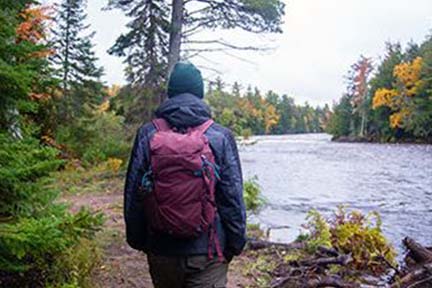



 The nation’s largest single-day volunteer event for public lands, established in 1994 and held annually on the fourth Saturday in September, this celebration brings out thousands of volunteers to help restore and improve public lands around the country. It offers those who love the outdoors an opportunity to show their gratitude for these valuable natural resources through trail restoration, park cleanups and other events.
The nation’s largest single-day volunteer event for public lands, established in 1994 and held annually on the fourth Saturday in September, this celebration brings out thousands of volunteers to help restore and improve public lands around the country. It offers those who love the outdoors an opportunity to show their gratitude for these valuable natural resources through trail restoration, park cleanups and other events.
 The Michigan Department of Natural Resources has spent much of the past two years developing an updated strategy for the approximately 4.6 million acres of public lands the department is responsible for taking care of, which are owned by Michigan residents. Those lands include state forests, game and wildlife areas, state parks, trails, boating access sites, and more.
The Michigan Department of Natural Resources has spent much of the past two years developing an updated strategy for the approximately 4.6 million acres of public lands the department is responsible for taking care of, which are owned by Michigan residents. Those lands include state forests, game and wildlife areas, state parks, trails, boating access sites, and more.
 Getting outdoors, close to home
Getting outdoors, close to home
 The pandemic led many people to discover the well-documented physical and mental health benefits of getting outdoors and having green spaces close to where people live.
The pandemic led many people to discover the well-documented physical and mental health benefits of getting outdoors and having green spaces close to where people live.
 Diversity
Diversity
 “This unique partnership model and undertaking would not have been possible without the significant commitment, ownership and investment from Michigan Department of Natural Resources and showcases an important commitment to revitalizing communities and parklands in urban areas across the state,” Keenan-Lechel said.
“This unique partnership model and undertaking would not have been possible without the significant commitment, ownership and investment from Michigan Department of Natural Resources and showcases an important commitment to revitalizing communities and parklands in urban areas across the state,” Keenan-Lechel said.
 In the Upper Peninsula, with millions of acres of public land offering abundant outdoor recreation opportunities and supporting the region’s industry, public lands are essential.
In the Upper Peninsula, with millions of acres of public land offering abundant outdoor recreation opportunities and supporting the region’s industry, public lands are essential.
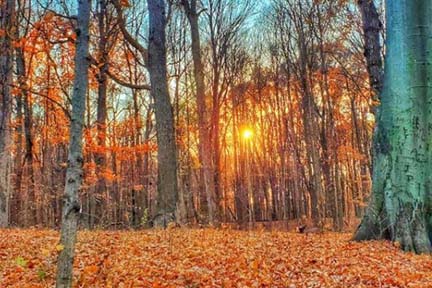

 Want to see more pictures like this, taken by Michigan state parks photo ambassador
Want to see more pictures like this, taken by Michigan state parks photo ambassador  Established in 1972, National Hunting and Fishing Day celebrates and recognizes hunters and anglers for their immense contributions to fish and wildlife conservation and to our society.
Established in 1972, National Hunting and Fishing Day celebrates and recognizes hunters and anglers for their immense contributions to fish and wildlife conservation and to our society.
 Gov. Gretchen Whitmer issued a proclamation to mark Sept. 25 as Hunting and Fishing Day in Michigan to recognize their importance and to bring awareness to conservation efforts driven by hunters and anglers.
Gov. Gretchen Whitmer issued a proclamation to mark Sept. 25 as Hunting and Fishing Day in Michigan to recognize their importance and to bring awareness to conservation efforts driven by hunters and anglers.
 Following a tree giveaway event last week at the Outdoor Adventure Center in downtown Detroit, 150 new trees are making their way into neighborhoods by car and bike, on foot and even by boat. In partnership with the DNR, The Greening of Detroit and the Detroit Pistons planned and organized the event.
Following a tree giveaway event last week at the Outdoor Adventure Center in downtown Detroit, 150 new trees are making their way into neighborhoods by car and bike, on foot and even by boat. In partnership with the DNR, The Greening of Detroit and the Detroit Pistons planned and organized the event.
 Michigan Trails Week is upon us, and so is the Michigan Trails Week Challenge! Whether you’re into hiking, biking, horseback riding, snowmobiling, off-roading or paddling, this is the week to get out on your favorite trail or explore someplace new.
Michigan Trails Week is upon us, and so is the Michigan Trails Week Challenge! Whether you’re into hiking, biking, horseback riding, snowmobiling, off-roading or paddling, this is the week to get out on your favorite trail or explore someplace new.
 Peak fall colors are on the way, which means Michigan’s nearly 20 million acres of forest land are ready to put on their annual show, enticing visitors and residents on road trips around the state.
Peak fall colors are on the way, which means Michigan’s nearly 20 million acres of forest land are ready to put on their annual show, enticing visitors and residents on road trips around the state.
 Every year, on the fourth Saturday in September, we celebrate National Public Lands Day – the country’s largest, single-day volunteer effort centered around public lands. It’s a great opportunity for people to devote a day to caring for public green and wild spaces, including parks, trails, hunting lands and forests.
Every year, on the fourth Saturday in September, we celebrate National Public Lands Day – the country’s largest, single-day volunteer effort centered around public lands. It’s a great opportunity for people to devote a day to caring for public green and wild spaces, including parks, trails, hunting lands and forests.
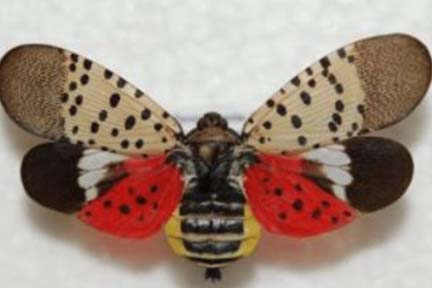

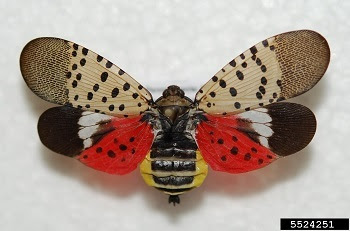 First detected in the United States in 2014 in southeastern Pennsylvania, spotted lanternfly has been spreading rapidly across the northeastern states. There have been confirmed infestations in Connecticut, Delaware, Indiana, Maryland, New Jersey, New York, Ohio, Virginia, and West Virginia.
First detected in the United States in 2014 in southeastern Pennsylvania, spotted lanternfly has been spreading rapidly across the northeastern states. There have been confirmed infestations in Connecticut, Delaware, Indiana, Maryland, New Jersey, New York, Ohio, Virginia, and West Virginia.
 From late summer to the first hard frost, spotted lanternflies are in their adult stage. Adults are roughly one inch long. Their folded wings are gray to brown with black spots. Open wings reveal a yellow and black abdomen and bright red hind wings with black spots transitioning to black and white bands at the edge.
From late summer to the first hard frost, spotted lanternflies are in their adult stage. Adults are roughly one inch long. Their folded wings are gray to brown with black spots. Open wings reveal a yellow and black abdomen and bright red hind wings with black spots transitioning to black and white bands at the edge.
 Individuals and businesses receiving shipments from states known to have spotted lanternfly should also be on the lookout for adults or egg masses on goods and packing materials.
Individuals and businesses receiving shipments from states known to have spotted lanternfly should also be on the lookout for adults or egg masses on goods and packing materials.
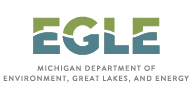




 Want to see more pictures like this, taken by Michigan state parks photo ambassador
Want to see more pictures like this, taken by Michigan state parks photo ambassador  Educators of all types will head to Eastern Michigan University, in Ypsilanti, next month for the state’s premier environmental education conference. It takes place Oct. 1-3, a full weekend of workshops, field trips and breakout classes aimed at inspiring teachers, Scout leaders, and staff and volunteers from zoos and nature centers to consider creative, new ways of connecting with students and visitors.
Educators of all types will head to Eastern Michigan University, in Ypsilanti, next month for the state’s premier environmental education conference. It takes place Oct. 1-3, a full weekend of workshops, field trips and breakout classes aimed at inspiring teachers, Scout leaders, and staff and volunteers from zoos and nature centers to consider creative, new ways of connecting with students and visitors.

 Enjoy Michigan’s abundant small game hunting opportunities this fall, all with your base license.
Enjoy Michigan’s abundant small game hunting opportunities this fall, all with your base license.
 Several fisheries orders, a land use order regarding beach access, introduction of DNR Wildlife Division Chief Jared Duquette and several land transactions are just some of the agenda items for the next meeting of the Michigan Natural Resources Commission, scheduled for Thursday, Sept. 16.
Several fisheries orders, a land use order regarding beach access, introduction of DNR Wildlife Division Chief Jared Duquette and several land transactions are just some of the agenda items for the next meeting of the Michigan Natural Resources Commission, scheduled for Thursday, Sept. 16.